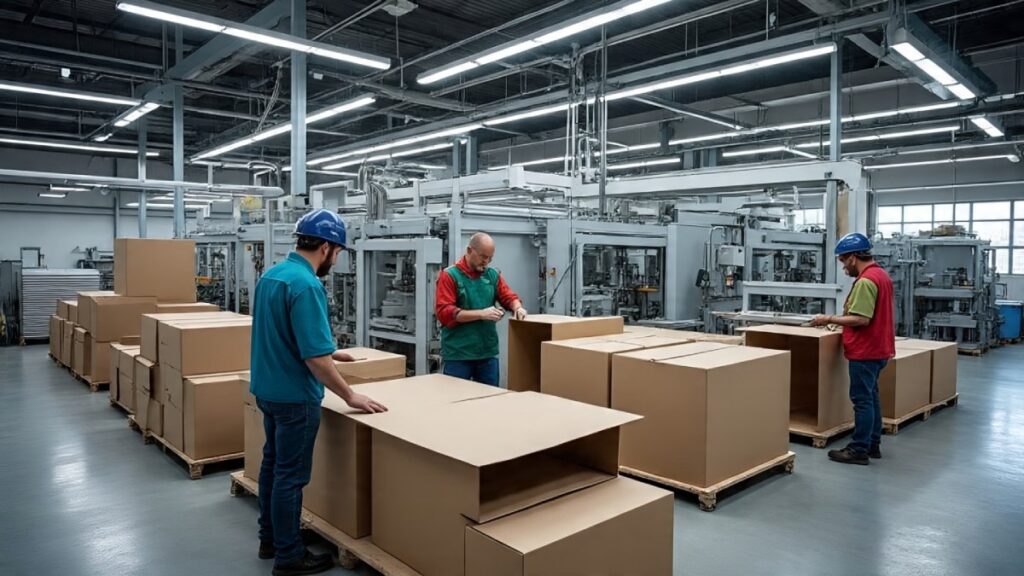
As environmental concerns grow, businesses across the globe are rethinking packaging strategies to minimize waste and reduce carbon footprints. Corrugated packaging, long valued for its versatility and strength, has emerged as a key player in sustainable logistics and retail. With recent technological and material innovations, this traditional material is being transformed into an eco-conscious solution for modern supply chains.
This article explores the latest sustainable innovations in corrugated packaging and how they benefit both businesses and the planet.
1. Use of Recycled and FSC-Certified Materials
One of the most effective ways to enhance sustainability in packaging is through responsible sourcing.
Material Advancements:
- Post-consumer recycled fiber to reduce virgin material usage
- FSC-certified paperboard to ensure responsible forestry practices
- Corrugated liners made from renewable sources
These materials support a circular economy and demonstrate environmental accountability to consumers.
2. Water-Based Inks and Biodegradable Adhesives
Printing and adhesive choices significantly affect a package’s environmental footprint.
Eco-Friendly Options:
- Water-based inks that emit fewer VOCs and are safer to recycle
- Soy- and vegetable-based inks as alternatives to petroleum-based counterparts
- Starch-based adhesives that are biodegradable and compostable
These alternatives reduce environmental toxicity and improve recyclability.
3. Lightweight Structural Engineering
Reducing packaging weight can lead to significant carbon savings in transportation and material use.
Efficiency Enhancements:
- Engineered fluting patterns that maximize strength with less material
- Optimized box design to fit products precisely, reducing void fill
- Flat-pack designs to minimize space in storage and shipping
Lighter packaging reduces emissions without sacrificing protection.
4. Circular Design for Reuse and Recycling
Sustainable corrugated packaging is being designed with end-of-life in mind.
Circular Strategies:
- Recyclable mono-material designs to avoid contamination
- Pre-perforated panels for easy breakdown and reuse
- Consumer-friendly recycling instructions printed directly on packaging
These practices extend product lifecycle and promote responsible disposal.
5. Integration with Digital Technologies
Smart packaging features can support sustainability by improving supply chain visibility and reducing waste.
Digital Innovations:
- QR codes for recycling info, product traceability, or refills
- RFID/NFC tags for real-time tracking and inventory management
- Digital twins to optimize packaging lifecycle and carbon metrics
Tech-enhanced corrugated packaging bridges efficiency with environmental responsibility.
6. Industry Collaborations and Certifications
Leading brands are aligning with global initiatives to validate their sustainability claims.
Notable Programs:
- Sustainable Packaging Coalition (SPC) membership
- How2Recycle labels for standardized consumer guidance
- Carbon-neutral certification programs from accredited bodies
These initiatives help build trust and transparency with eco-conscious buyers.
Conclusion
Corrugated packaging is no longer just a practical necessity it’s a critical part of corporate sustainability initiatives. By adopting innovations like recycled materials, low-impact inks, circular designs, and smart technologies, businesses can reduce waste, lower emissions, and meet growing environmental expectations.
These sustainable solutions don’t just benefit the planet they also support long-term business resilience and customer loyalty. Now is the time to innovate, adapt, and lead in sustainable packaging practices.
Need help transitioning to eco-friendly corrugated packaging? Connect with our experts to explore custom sustainable solutions tailored to your supply chain.



